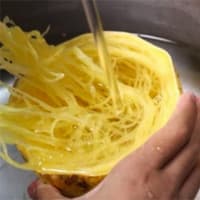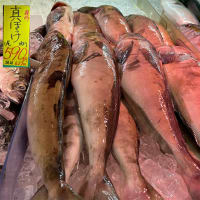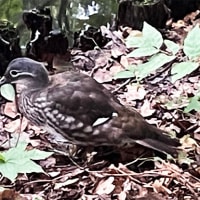
きのうは伊予松山の道後温泉にほど近い「湯築城」からの発掘出土品の陶磁器に触れた。瀬戸内海経済圏の四国側での中心地域とも言われる伊予の国。歴史年代でもその地域首長「伊予守」の地位は律令体制でも非常に重要視された地域。遠く藤原純友の乱でも、この伊予が主要な舞台となった。
伊予・河野家は歴史に何度も名が出てくる武家の名門。その根拠地がこの湯築城なのですね。
その根拠地の城郭地域から出土する陶磁器が、主に備前窯で生産された陶磁器であったということは、その交易の対手の存在を伺わせていると思える。この備前窯が37,130点に対して、日本国全体の主要貿易対手である中国・明の窯からのものは12,281点。
国際交易の最高交易品に対して、備前のそれはほぼ3倍のレベルになっていて、その他の窯元からの出土品に対しては百倍以上の格差が存在していた。ということは備前の窯が主要な交易対手であることを示唆する証拠なのか。
こうした陶磁器の「使われ方・用途」について調べていると武家の生活スタイルとしての「宴席」での使用という解説にめぐり会った。鎌倉期以来、日本史の主役として各地域権力の武士層が登場してくるけれど、かれらの「生態」とこれらの陶磁器出土には密接な関係があって、主従の契約などの重要な「格式文化」として陶器がその脇役として重要な「舞台構成品」だという説。
たしかに有名な織田信長の桶狭間出陣でも、幸若の舞を舞って陶器に注がれた酒を飲み干した後、陶器を叩き割って出征する場面が有名。実際にかれがそうしたかどうかは別にして、そういう光景が武家の一般的な行動様式であったことが偲ばれる。

また、奥州平泉の遺跡からは大量の愛知県地方・常滑産の陶磁器が出土しているという。この場合も奥州藤原氏にとってこの愛知県地域の豪族が交易対手として存在したのではないか。こうしたいわばモノの痕跡から浮かび上がってくる「経済的・軍事的側面」があると想像できる。
2枚目の写真は湯築城の復元・武家屋敷の様子。宴席の「配膳室」と見えたけれど、背面には多量の陶磁器が棚に積層させられている様子がわかる。
戦場ではいのちのやり取りをする武家にとって、そうした戦争の会議にはこの物資が必要だったことが明示的に示されている。
その物資供給に於いて瀬戸内経済圏においては備前窯が単に圧倒的なシェアを誇っていたのかが問われるところ。しかしわたしが探訪した中世の瀬戸内海交易の商工痕跡「草戸千軒」遺跡ではそのような窯元集中というような形跡は見られなかったし、分析もされていなかった。
とすればやはり主要な交易「対手」として備前の陶磁器を大量に出荷した存在が浮かんでくるのではなだろうか。わたしの想像としてその対手に血縁関係もある播州英賀の「三木氏」が想起された次第。時代的な経緯からも符合する。
こうした分析からは「瀬戸内海交易」の中世での内実が想像刺激されてくる。
English version⬇
Is the large amount of ceramics an expression of the samurai lifestyle?
It is a common practice for warriors, who exchange life and limb on the battlefield, to drink sake and break pottery to make a covenant. An analysis of the economic aspects of this practice. ...
Yesterday, I was exposed to ceramics excavated from the Yuzuki Castle, which is located near Dogo Hot Springs in Iyo Matsuyama. Iyo Province is said to be the central region on the Shikoku side of the Seto Inland Sea Economic Zone. Even in historical times, the position of “Iyomori,” the chief of the region, was considered very important in the Ritsuryo system. Iyo also played a major role in the Fujiwara no Junyu Rebellion.
The Kono family of Iyo is a prestigious warrior family whose name appears many times in history. So the groundwork for this is this Yuzuki Castle.
The fact that the ceramics excavated from the castle area of this base were mainly those produced by the Bizen kiln seems to indicate the existence of its trading counterpart. While these Bizen kilns produced 37,130 pieces, those from the Ming kilns of China, the main trading partner of Japan as a whole, produced 12,281 pieces.
This is almost three times the level of the highest level of international trade, and there is a disparity of more than one hundred times the level of the other kiln finds. Does this evidence suggest that the Bizen kilns were a major trading partner?
In researching the “usage and purpose” of ceramics, I came across an explanation that ceramics were used for “banquets” as part of the lifestyle of the samurai family. Since the Kamakura period (1185-1333), the warrior class of each region has appeared as a major player in Japanese history, and there is a close relationship between their “ecology” and the ceramics excavated from these sites.
Indeed, there is a famous scene in Oda Nobunaga's famous campaign in Okehazama, where he danced the “Kowaka no Mai” dance, drank all the sake poured into the pottery, and then smashed the pottery to go to war. Whether or not he actually did so, this scene reminds us that such scenes were common behavior of samurai families.
In addition, a large amount of ceramics from Tokoname, Aichi Prefecture, have been excavated from ruins in Hiraizumi, Oshu. In this case, it is likely that a powerful family from Aichi Prefecture existed as a trading partner for the Oshu Fujiwara clan. We can imagine that there are “economic and military aspects” that emerge from the traces of these objects.
The second photo shows the restored samurai residence at Yuzuki Castle. It looks like a “serving room” for a banquet, but in the back you can see a large amount of ceramics and porcelain stacked on shelves.
This clearly shows that these supplies were necessary for the samurai who exchanged lives on the battlefield for such war meetings.
The question is whether the Bizen kilns simply boasted an overwhelming share of the Setouchi economic zone in the supply of such goods. However, there was no evidence of such a concentration of kilns at the “Kusado-Senken” site, a medieval Seto Inland Sea trade site that I visited, and no analysis was conducted.
If this is the case, the existence of a major trading “counterpart” who shipped large quantities of Bizen ceramics may come to mind. In my imagination, the “Miki Clan” of Banshu Eiga, to whom I am related by blood, came to mind. The historical background of the two clans is also consistent with each other.
Such an analysis stimulates my imagination about the medieval “Seto Inland Sea trade.



















